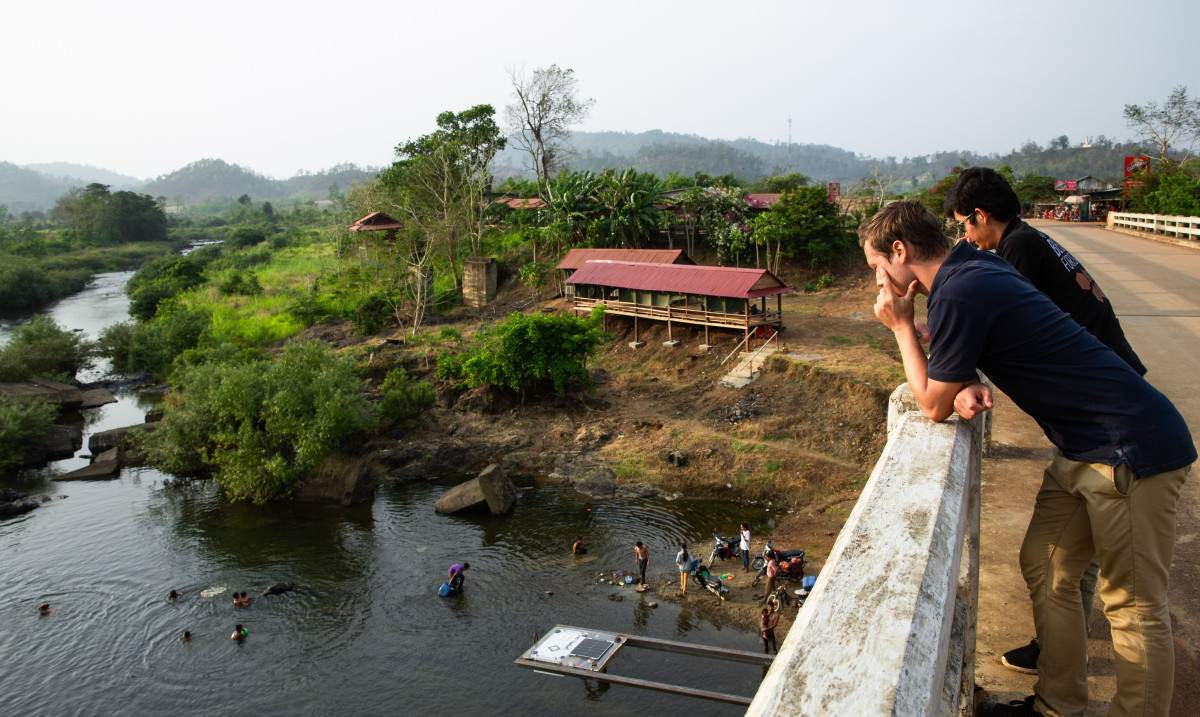Promoting climate-change adaptation in Cambodia
Published: May 26, 2020 Reading time: 5 minutes Share: Share an articlePeople in Need (PIN) places climate-change adaptation high on its agenda. In Cambodia, we’re using Disaster Risk Reduction (DRR) strategies to enhance communities’ climate resilience.

Climate change is one of the greatest challenges facing humanity, but even as efforts to curb rising temperatures continue apace, initiatives to help communities adapt are lagging. Recognizing this gap in humanitarian assistance, PIN has focused considerable energy on accelerating disaster risk reduction (DRR) programming. One of our most active efforts is in Cambodia.
In 2013, PIN Cambodia developed a user-centered alert tool, the Early Warning System (EWS) 1294, to deliver advance warnings in areas prone to natural disasters. Using sophisticated hazard-detection technology, data-storage tools and warning-dissemination software, the system sends voice-based alerts and instructions to registered users when the threat of storm, flood, fire or disease outbreak is detected.
The goal of EWS 1294 is to give people enough time to get out of harm’s way. It was developed with funding from the European Commission (through the EU Civil Protection and Humanitarian Aid Operations organization) and in partnership with the Open Institute, Innovative Support to Emergencies Diseases and Disasters (InSTEDD), the Provincial Committee for Disaster Management (PCDM), and the National Committee for Disaster Management (NCDM).
Identifying the loopholes
In 2016, Cambodia was the ninth-most vulnerable country in the world to natural hazards (1). Every year, millions of Cambodians are affected by flooding, and in most cases, people have little or no warning before the floodwaters arrive. Flood information was non-existent in areas that are affected by flash floods. Knowledge of any medium to long term weather forecast were not accessible from both local government units or villagers (2).
Then in 2013, approximately 1.8 million Cambodians in 24 provinces and the capital, Phnom Penh, were affected by flooding. Once again, many families were unprepared and uninformed of the intensity and expected gravity of the floods. When the floodwaters receded, about 384, 846 hectares of rice paddies and 440 kilometers of roads were destroyed, at a cost of roughly $1 billion (3).
These events illustrated that for many Cambodian communities, disaster preparedness and advance-warning systems were of paramount importance.
Closing the gaps
The key to adaptation and disaster preparedness is the ability to monitor, in real time, climate and environmental data, and then detect trends to make reliable predictions (4). With 21 sensors installed across the country, EWS 1294 is giving the government of Cambodia this ability. In 2013, PIN and its partners piloted the first voice-based, mobile phone early warning distribution system in three flood-prone villages in the western province of Pursat. Since then, the program has expanded and undergone gradual improvements and upgrades. It is currently operating in 21 of Cambodia’s 24 provinces; in each one, the PCDM has access to a dashboard that highlights potential threats. Provincial authorities also have the ability to record and send messages directly to registered individuals and families in the affected areas.
PIN is establishing links at the grassroots and sub-national levels, working with a number of local and regional stakeholders in disaster-management preparedness (such as District Committee for Disaster Managements (DCDMs), Commune Committee for Disaster Managements (CCDMs) ,and Village Committee for Disaster Managements (VCDMs) to further improve the system. To facilitate this work, PIN and partners conduct trainings and workshops to enhance capacities in disaster-risk reduction and management. Moreover, PIN also helps identify vulnerable groups and geographies to strengthen contingency planning.
Finally, awareness campaigns of EWS 1294 supplement all of these efforts. For instance, PIN Cambodia’s staff actively visits schools in many provinces to raise awareness and help young people subscribe to alerts.
Measurements of success
To date, more than 309,000 Cambodians living in flood-prone communities have benefited from EWS 1294 warnings. EWS 1294 has reduced climate-change vulnerability and improved people’s response times to floods. “Before, we never had any tools to alert people about disasters, but with EWS 1294, I can now inform other villages about disasters,” says Soeu Moey, Village Chef of Doun Toak fishing village, in Kampot Province. “When a flood is about to occur, I go to the mosque, and announce the news via the loudspeaker to alert my people to protect themselves.”
Looking ahead to the next disaster
People in Need has already secured funding from donors including Swiss Development Cooperation, Ministry of Foreign affairs of Czech Republic, United Nations Development Programme in Cambodia and United States Department of State to increase EWS 1294’s geographical coverage. By December 2021, the system is expected to cover all of Cambodia’s provinces. PIN is also developing plans to transfer control of the system to the NCDM, a move that will ensure the system’s long-term sustainability.
References
(1). Afolake Oyinloye (2016). AfricaNews.com. “Thirteen of the 15 countries most vulnerable to natural hazard are in Africa.” https://www.africanews.com/2016/08/26/list-of-countries-vulnerable-to-natural-hazards//
(2). UNDP Cambodia. (2012). “Livelihood Recovery Needs Assessment – Cambodia 2011 Floods”
https://www.kh.undp.org/content/cambodia/en/home/library/environment_energy/livelihood-recovery-needs-assessment---cambodia-2011-floods.html
(2). The Royal Government of Cambodia (2014). kh.undp.org. “Post-flood early recovery need assessment report”. https://www.undp.org/content/dam/cambodia/docs/PovRed/Cambodia%20post-flood%20recovery%20need%20assessment%20report.pdf
(3). UNDP (2018). Adaptation-undp.org. “UNDP and People in Need Continue collaboration to realize a weather-ready climate-smart Cambodia.” https://www.adaptation-undp.org/undp-and-people-need-continue-collaboration-realise-weather-ready-climate-smart-cambodia
